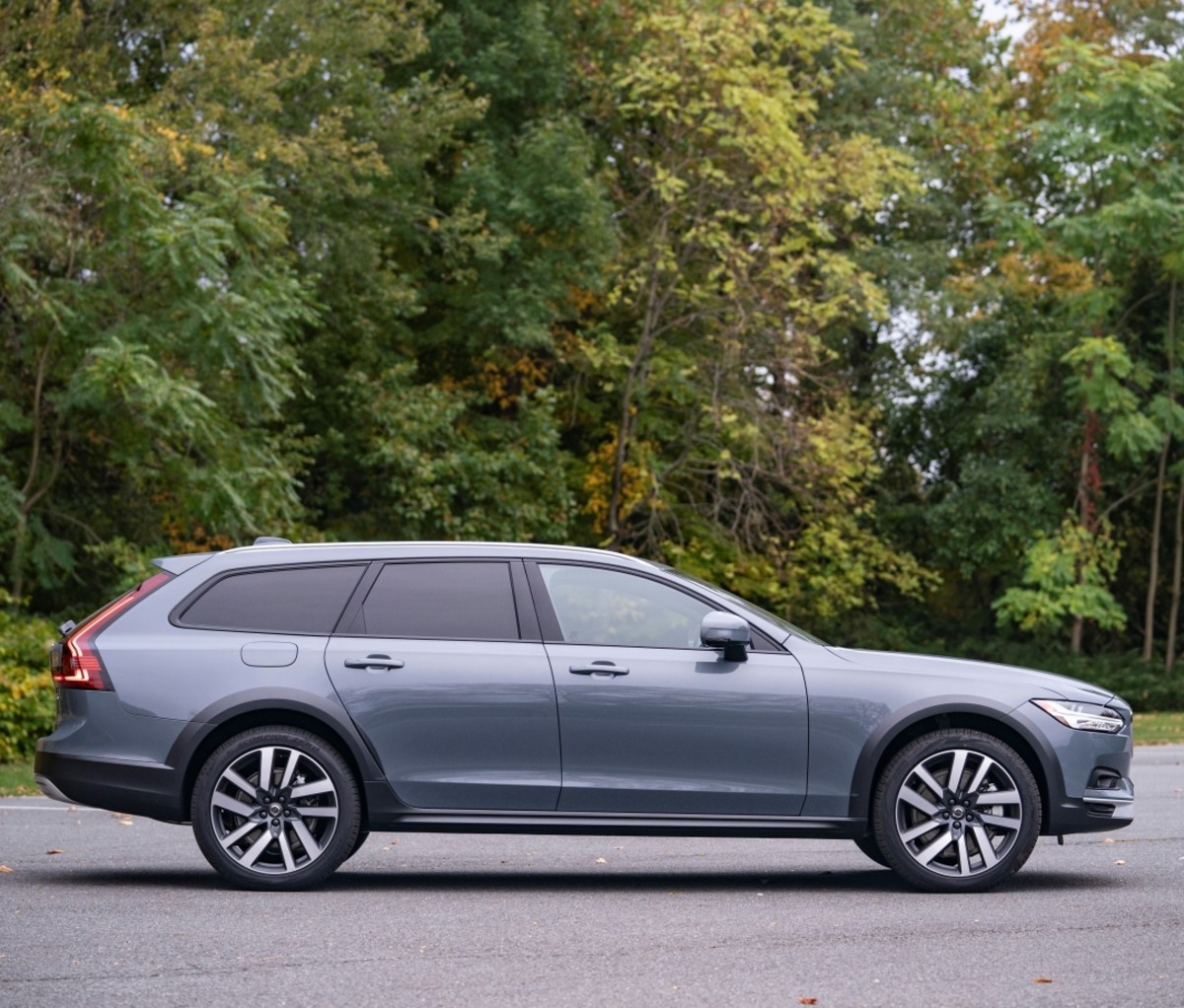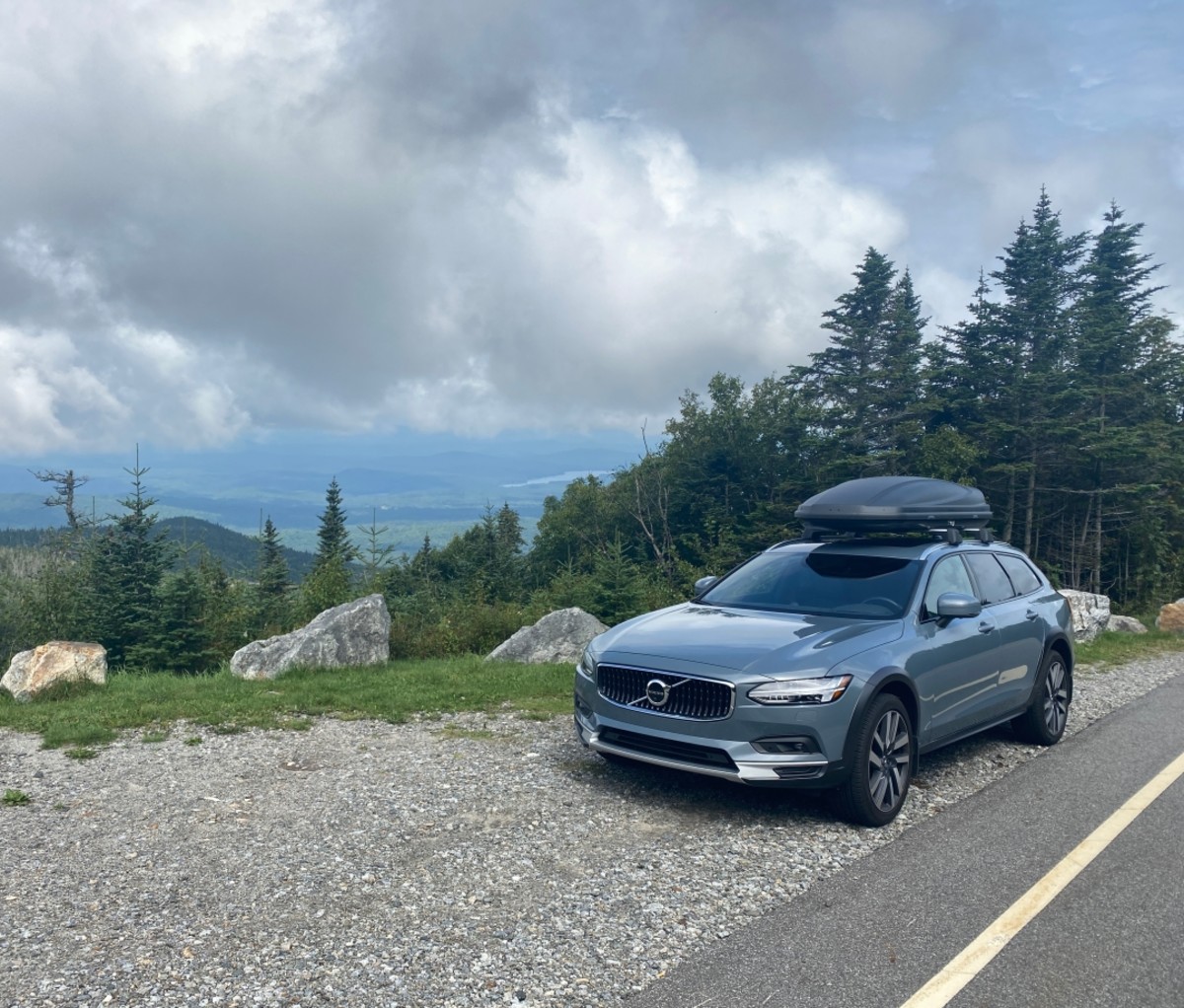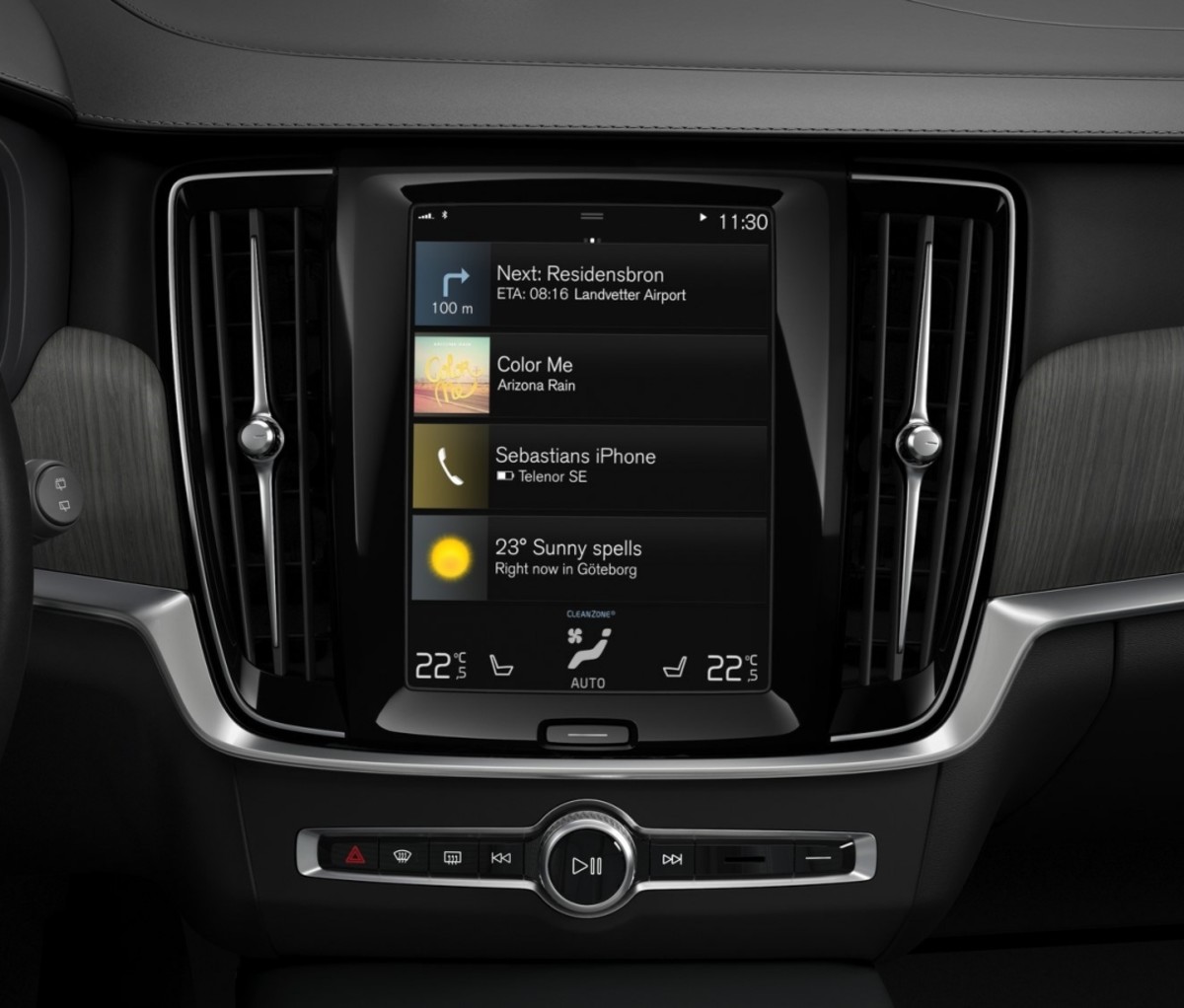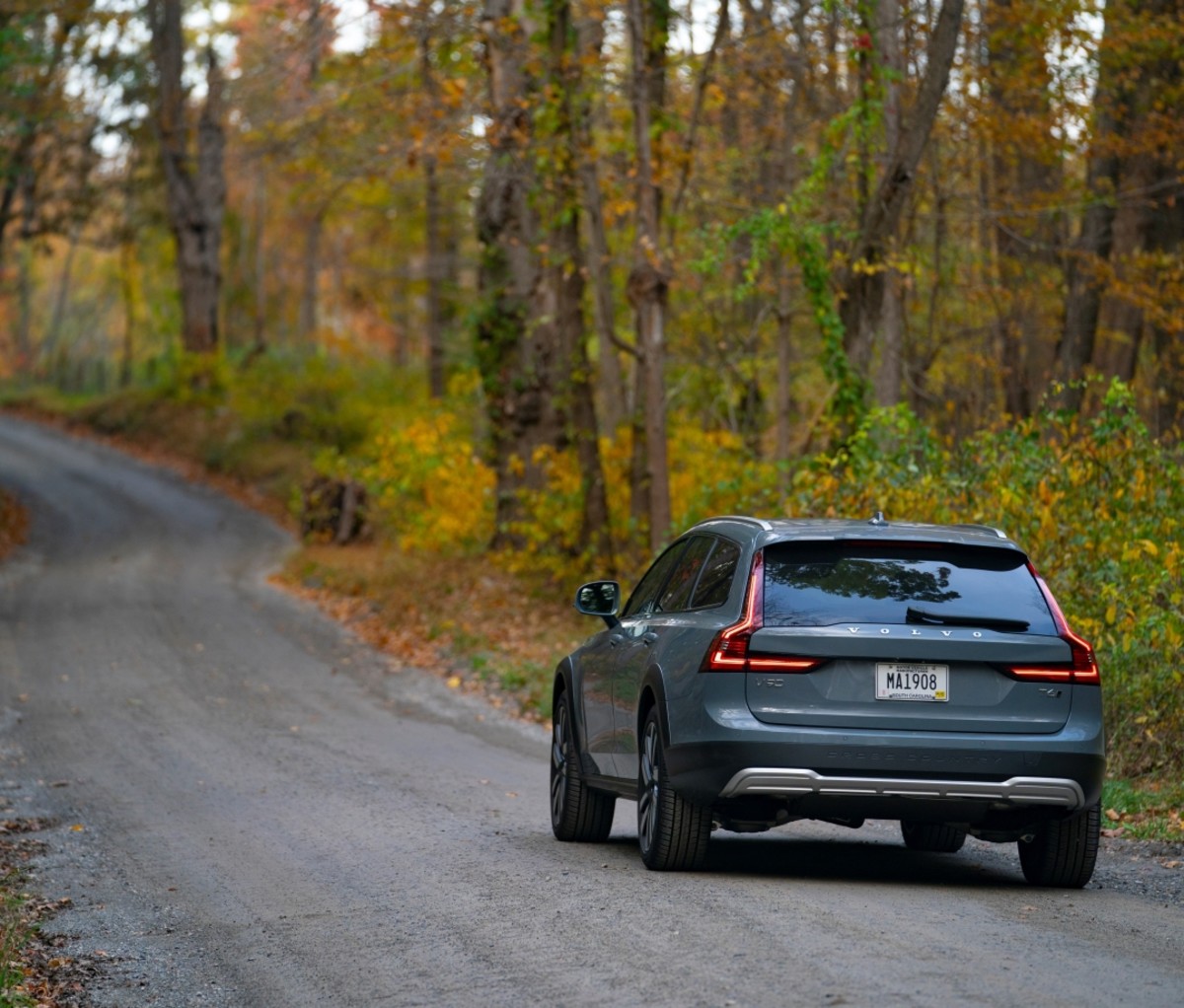[ad_1]
Like Chevy’s El Camino, Volvo is synonymous with a specific car shape—the wagon. Despite the popularity of the utilitarian Subaru Outback and luxury introductions from Audi and Mercedes-Benz, the long, low-slung, five-door wagon body style has never been as popular here as in Europe. But with its massive ground clearance and all-wheel drive—handy in winter weather or on dicey roads—the Volvo V90 Cross Country might make more practical sense than an SUV for many buyers.
If you’re more apt to cruise asphalt than live the off-roading, hill conquering life you see in SUV commercials, you might be better served in a wagon. To see if this luxury-minded people hauler—which you can option up to cost twice as much as a base Outback—is capable enough, we loaded it with gear and luggage and headed for the Adirondack mountains. Read on for our Volvo V90 Cross Country review.

Day 1: Loading Up and Shipping Out
The V90 is long, wide, and sculptural—a real looker. With its 20-inch-wide wheels and eight inches of ground clearance, it looks athletic and capable. For our test, Volvo dropped off a T6 model fitted with a rooftop box. Initially, we didn’t expect to need it, but after loading up the cargo space behind the back seats we noticed the V90’s trunk wasn’t as big as the one in our Outback. Despite being four inches longer and five inches wider than the Subaru, the V90 has less-than-average storage space. Can you fit a few carry-on bags and a haul from the market back there? Yes, but we did end up using the cargo box to carry three bags on our trip. On the plus side, the Volvo’s lower roofline made accessing the Thule rooftop box much easier than it would be on an SUV or crossover.
The wagon’s rear hatch opens hands-free with a sweep of the leg, which is more useful than it sounds. There is ample storage in the cabin for things like phones and drinks for all passengers. The center console up front does a smart job of holding a phone on the grippy wireless charger pad in transit, but it also tidies up quickly with sliding doors that cover the cup holders, which inevitably fill with junk.
Day 2: Taking On Mountain Roads
Volvo fits the V90 Cross Country with a 2.0-liter, four-cylinder engine that is both supercharged and turbocharged. The power plant puts out 316 horsepower and 295 lb-ft of torque through an eight-speed automatic gearbox with full-time all-wheel drive. Compared to a burlier six-cylinder SUV, the V90 might look underwhelming, but on the road it feels perfectly capable. It’s brisk off the line, with all the power you need and the control you want. The engine is neither flashy nor boring; it’s practical. If the car turns heads at a stoplight, it will be for the handsome, 16-foot long wheelbase, not the roar from underneath the hood.
Settling into what might be the most comfortable seat in any car—more on that later—the interior was very quiet and well insulated from road noise, even at highway speeds. From lane changes to merging onto the highway and navigating tight parking lots, the V90 handled like a smaller car. A selectable wheel on the center console allows for quick changes between its five driving modes. The eco option forces the Cross Country to use the engine’s start/stop feature when braking, which we’re not fans of. Fortunately, Volvo’s engineers included a dedicated button to override this feature (only available in other drive modes) instead of burying it in the infotainment system.
The comfort mode soaks up road bumps for a plush feel, and in dynamic mode the shifts are noticeably crisper and the shocks stiffen up so you feel the road a bit more. Volvo’s not trying to mimic a paddle-shifting roadster here (although the shifter will let you control the gearbox), but this mode is an easy way to get a more spirited ride to the gym or while taking the backroads. The V90 also comes with an individual mode that lets you tweak settings like the driver’s display, feedback in the steering wheel and brake pedal, and the stiffness of the suspension—but somehow this wasn’t as fun as the built-in dynamic mode.

The driving configuration we looked forward to the most was off-road. In this mode, maintaining traction takes priority and hill descent control kicks in to provide better control at lower speeds. The adaptive Four-C suspension worked to level out the back of the car on uneven terrain. On rough trails, it inspired confidence while leaving just enough bump in the road to keep things fun. Crawling up the paved Whiteface Veterans’ Memorial Highway, a five-mile ride that increases in elevation about 450 feet per mile, the engine never felt overwhelmed, even at torquey 20 mph. Coming back down while crawling at 10 to 15 mph, the V90 put on a clinic, displaying control in the tires and decisive steering.
Volvo is known for safety, and the V90 Cross Country is no exception. It comes with a host of safety features, including basics like blind-spot monitoring all the way up to collision avoidance and preventative braking. But the feature we liked best was pilot assist with lane centering. While it’s not true autonomous driving, it’s a very user-friendly system that’s controllable from the steering wheel. We used it to help on long stretches of highway. With our foot off the gas and a hand on the wheel, the Volvo centered itself in its lane and adjusted its speed to keep a safe distance from the vehicle ahead. If we let go of the wheel for a few seconds, the car gently reminded the driver to take control again.

Day 3: Soaking in the Luxury
Once you’re inside, it’s hard to miss the huge sunroof that blasts the cabin, including nearly all of the back seat, with light. Those riding in back get access to USB ports, HVAC controls, and pull-up sun shades tucked into the doors, along with a center armrest with cup holders and storage. For parents, those rear seats include built-in boosters, too. While there’s enough room for two adults to comfortably ride in the back on a long journey, three larger buddies would face a tough squeeze, especially for more than a 30-minute trip.
Up front, the Volvo pulls away from the pack. It has far more luxury than the Subaru and, we’d argue, a more refined interior than its German competitors. The dash is a compelling mix of soft leather, real wood, clean horizontal lines, and a bright nine-inch infotainment screen. The center console’s start knob, along with a few other buttons, feature a textured plastic surface—a tactile reminder that designers paid attention to the details.
The perforated leather front seats are heated and cooled and have just about every adjustment you can imagine—including massage modes that made us consider working from home in the driveway. You sit deep in this car, which helps it feel more like a sedan and lightyears away from an SUV. The center console is positioned high enough that your forearm can rest on it and your hand has easy access to the shifter and various knobs. In true Swedish fashion, the interior is minimal and clean.

The center touchscreen is faster and more responsive than those found on previous V90 models, and while it took some getting used to, swiping around to get to one of three main screens eventually became second nature. The physical buttons below the screen are minimal, but thankfully Volvo docks the HVAC controls at the bottom of the screen so no matter what menu you’re on, adjusting the temperature is easy.
The native Sensus navigation works well and you can write in destinations on a small trackpad on the screen, though we suspect most will use their iPhone or Android for directions. The car’s assistant was hit or miss with our requests, often excelling at things like tweaking the temperature but clumsier with tasks like finding a coffee shop. Volvo didn’t include a wireless connection to your phone, so you will still need that cord. We prefer to use Waze in town, but those turn-by-turn directions won’t appear in the car’s 12-inch-wide digital gauge display.
The Bowers & Wilkins stereo system is one of the better audio options out there, and it comes with a few very useful listening modes. When you’re alone, for example, you can adjust the speakers to focus on the driver. Don’t bother fiddling with the EQ—just use the Gothenburg Concert Hall setting, which will give a stellar sound upgrade to any playlist.

Bottom line: The Volvo V90 Cross Country starts at roughly $56,200, topping out at over $67,700 as tested. It’s priced as a premium luxury car, and it rides accordingly—with some capable rough-road chops added in. You can find comparable ruggedness in a less expensive Subaru Outback, but you’ll sacrifice technology and cabin comfort. The Volvo holds its own against similarly spendy German wagons, although spec-for-spec it’s not as powerful. Instead, the V90 is a very capable people hauler for those looking at crossovers or who don’t need an SUV to tow with. After our weekend, we came away with a solid appreciation for the V90: It’s a practical, occasionally sporty daily driver that’s easy to love.
For access to exclusive gear videos, celebrity interviews, and more, subscribe on YouTube!
[ad_2]